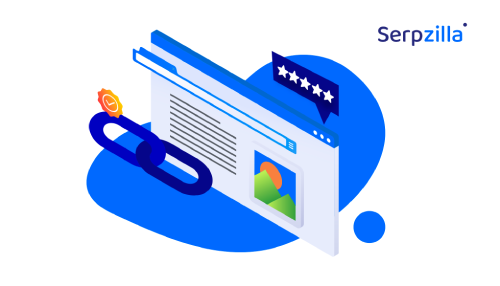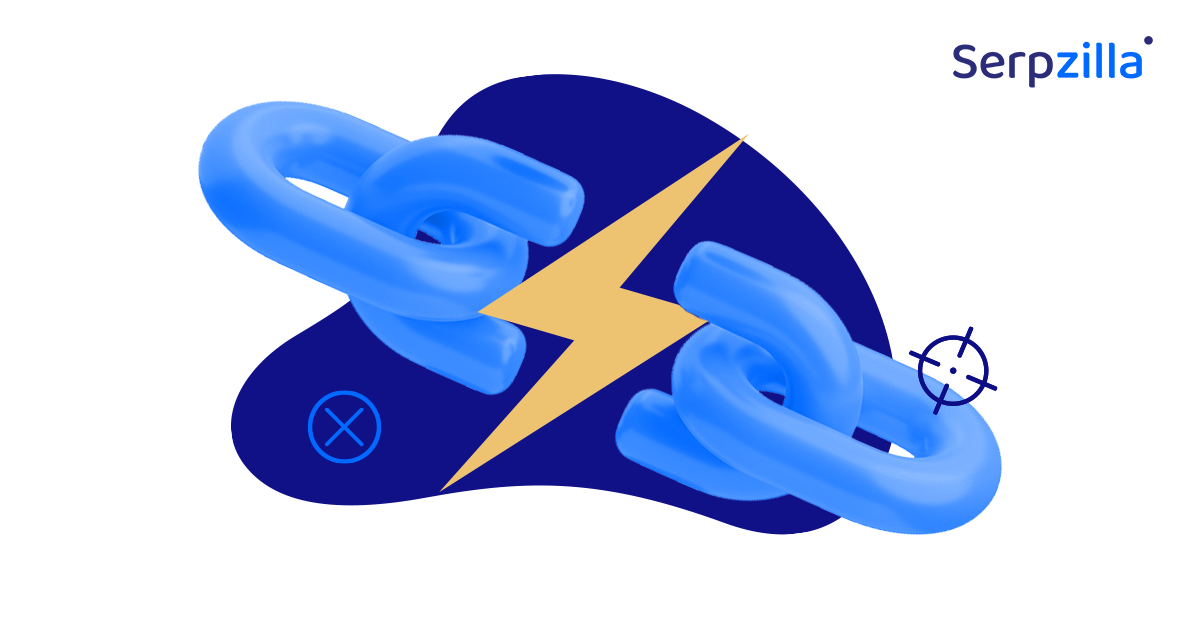In this article, we will tell you what parameters to look for when evaluating a potential referring domain or your own website, and most importantly, what DR metric you really need to go for in your link building effort. Read on to find out why referring domains with DR80 and beyond are far from the most important part of your backlink profile.

Different SEO experts use different metrics to evaluate a website, because it all depends on the tool you choose for measurements. What’s worth noting is that DR (Domain Rating), DA (Domain Authority) are both domain trust indicators. The only major difference is that DR is a trust-metric used and coined by Ahrefs, and DA is the same metric, but as used in Moz. We will use the Ahrefs metric in this article. These metrics are interchangeable since the discrepancy between the two is negligible.
What DR score is good for us?
There is no single definite answer to this question. Anyone saying they know such an answer is probably being a bit disingenuous. Let’s first understand why our website needs DR and what is the gain for us when this trust-metric is growing?
Let’s start with Google. Google uses these trust metrics to determine how websites rank among each other. A domain with a higher trust (DR) will be more likely to rank higher in search results. So, in the end, we increase the DR of our website in order to improve its ranking in Google, and ideally even get into the top of the SERP. And we want to increase the ranking of our website in Google for a simple reason: we want users who want to find/buy something to always find us, so that they give us traffic, leads and let us make more profit.
So now it is clear to see that DR is connected to and basically equals money:
DR = traffic = leads = profit
Now the question is how do we boost this trust-metric, DR? With the help of backlinks, the external links to our website. When other websites link back to our website, they thus signal to Google – “these guys can be trusted”. Google heeds to this message and gives us more trust points and our DR grows pushing us up the rankings.
Seems more than clear, but there’s something we have to point out. It is easy to take a wrong turn with having just a bare concept of the DR in mind. Let us expand upon the subject of high-DR websites. One might look at high-DR websites and assume they definitely need to buy backlinks there, on websites with DR80+, for example. While it is not wrong in some sense, this approach definitely has a number of inevitable flaws that few think about. First, such websites are hard to find. There are few of them, while usually you need a lot of backlinks. This is the first problem. Second, such websites are quite expensive to buy from. You will need to invest not only a lot of time to find them and pick the suitable ones, but also to spend a lot of money to get your backlinks published. On top of that, consider the fact that you are not the only one who wants to get their hands on such websites. And that means you will have to compete with other applicants, which will definitely affect the cost of link placement, not to mention the negotiations might take quite a while.
Another reason to consider in regards to high-DR referring domains is that your backlink profile has to be natural. Google evaluates a backlink profile of a website not only by how great this profile is and how many high-DR referring domains there are. Google also evaluates how “natural” your backlink profile is. How? By measuring the ratio of low-trust (LT) backlinks to high-trust (HT) ones.
In the natural environment, a website’s natural backlink profile is extremely unlikely to consist of backlinks from domains with a DR of 80+. It is unnatural and Google understands this. However this does not necessarily mean Google will penalize you for it.
The bottom line is that Google gives preference to websites with natural backlink profiles. The ratio of LT to HT varies around 60/40 or 70/30. So we focus on the fact that most of the backlinks are from low-trust domains. About 60% of your backlink profile will be backlinks from referring domains with DR40-50 or below.
Don’t get confused, we need high-quality backlinks. The point is that the closer we get to and past the DR50 mark, the fewer backlinks we will need for the desired effect on our own DR. We will need roughly 5-10 backlinks (or under 1,6% total) from domains with DR80 in the entire profile. This will be the most natural.
The best way to understand exactly what ratio is needed for you is to look at your competitors. It is highly probable, you will approximately see the ratio similar to what was mentioned above. The bottom line is that you should make your purchases based on the ratio in the backlink profile of your competitors.
Which DR score is good for your referring domains? Any score, different score. keep the profile diverse and as natural as possible in terms of your choice and needs.
How to work with it all?
First, use some tools to check your competitors. We use Ahrefs – a great tool for thorough domain evaluation. You can focus on online services to find your competitors, or you can take your competitors directly from Google via queries. If you are the owner of a business, then you may already have a ready-made list of main competitors in your head. It can also be used to form a list.
Then you research your competitors’ backlink profiles and calculate the ratios between different DR ranges. These ratios must be carefully observed to know exactly what percentage of which backlinks do we need in the total mass of the link profile. For example, 20% of DR 0-10 (yes, those come in handy too), 30% of DR 20-30, etc.
Read on how to analyze your competitors’ backlink profiles.
After you have all the percentages figured out, you’ve looked at the total number of backlinks in the profile of your competitors, you can move further. We now understand how many links we need in total and how many links we need with a specific DR. After that, our task is to do everything the same as competitors, but better. We are going to buy a little more and a little better backlinks. Backlinks don’t have to be better in terms of concrete metrics. They may just be more relevant, which also affects their quality.
Trust is just one of the indicators Google takes into account when ranking websites. Another one, probably just as important, is how natural is the backlink profile of the website. The third indicator is the topical relevance of the backlink profile. These are exactly the parameters by which we can outperform our competitors.
Tags and risks
After we have sorted out all the domains and got all the numbers and percentages, we are ready to buy some backlinks. It is important to note that many people are hesitant or even afraid to make a direct purchase and rely on free link exchange, etc. We, at Serpzilla, have countless case-studies confirming that paid links are good and actually safe.
If you are still hesitant, you can add a tag to your backlinks (rel=”sponsored”). This is a special tag that Google introduced relatively recently to mark specifically paid content. These tags (along with DoFollow and NoFollow) are needed for Google to better understand your backlink profile. And in the case of rel=”sponsored” tag to show that your paid link is legitimate and not spam.
For example, let’s take Wikipedia. Wikipedia flags all links as NoFollow in fear of being sanctioned by Google. This is not good, because, probably, at least some links on Wikipedia are actually important, meaningful and should be tagged as DoFollow and Google realized that.
Therefore, Google introduced a special tag (rel=”sponsored”) so that people are not afraid to tag their backlinks. According to our research, this tag is almost as effective as the DoFollow tag. Accordingly, do not be afraid to use it in your backlink profile.
And here comes another nuance: if we really want to make our backlink profile as natural as possible, the ratio between the tags should also be considered. So study your competition.
Buying backlinks
Next, we start buying backlinks. You can do this through different services, such as Serpzilla. You usually need quite a lot of backlinks, they need to be published regularly and this is exactly what Serpzilla excels at.
We have more than 100,000 websites, a billion pages, any topic you need. Our database is built with a focus on high diversity in backlinks and topics. So you go to Serpzilla, create a project and start making a purchase.
What should I do if I can’t afford to buy backlinks from domains with DR80+? The answer is simple: you don’t need DR80+ backlinks. Certainly not in the amount that you thought before reading this article. Understand perfectly well that, oddly enough, low-trust backlinks are what you need first of all and this is absolutely normal for Google algorithms.
As soon as you’ve purchased your backlinks, it is time to wait and let it “brew” for a while. Indexing takes time and link juice will not come to you overnight. The earliest results can be seen within a month or two, but usually your backlink profile should start to bear fruit 4-6 months later. Just enough time for Google to index and rank everything.
You will get an increase in trust, your website’s DR will grow and, consequently, you will see an increase in traffic.
The beauty of this method of promotion is it does not require large investments from you. High-trust backlinks are usually very expensive, but they’re not what we really need to build a solid quality foundation for our profile. We also need DR10 referring domains. Their backlinks are cheap, there is no queue for them and it is very easy to find them. On Serpzilla, you can rent such backlinks for 1 cent per month. That is 12 cents a year!
Our goal here is not just to buy backlinks. Our goal is to “outweigh” and, eventually, outrank our competitors. You really need a lot of backlinks, and a bulk of low-trust but well-chosen backlinks will help you beat your competitors, get more traffic, and get more leads.








